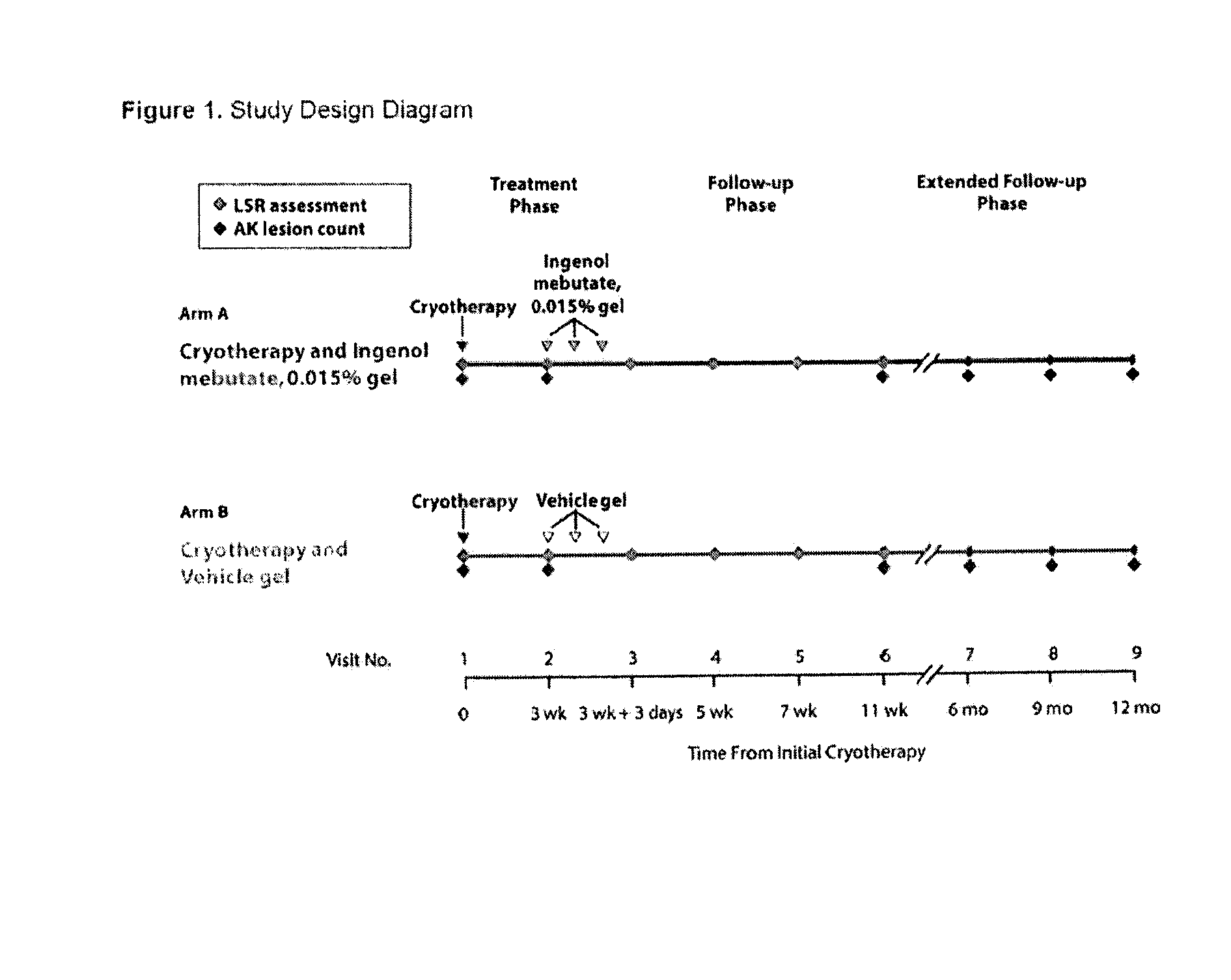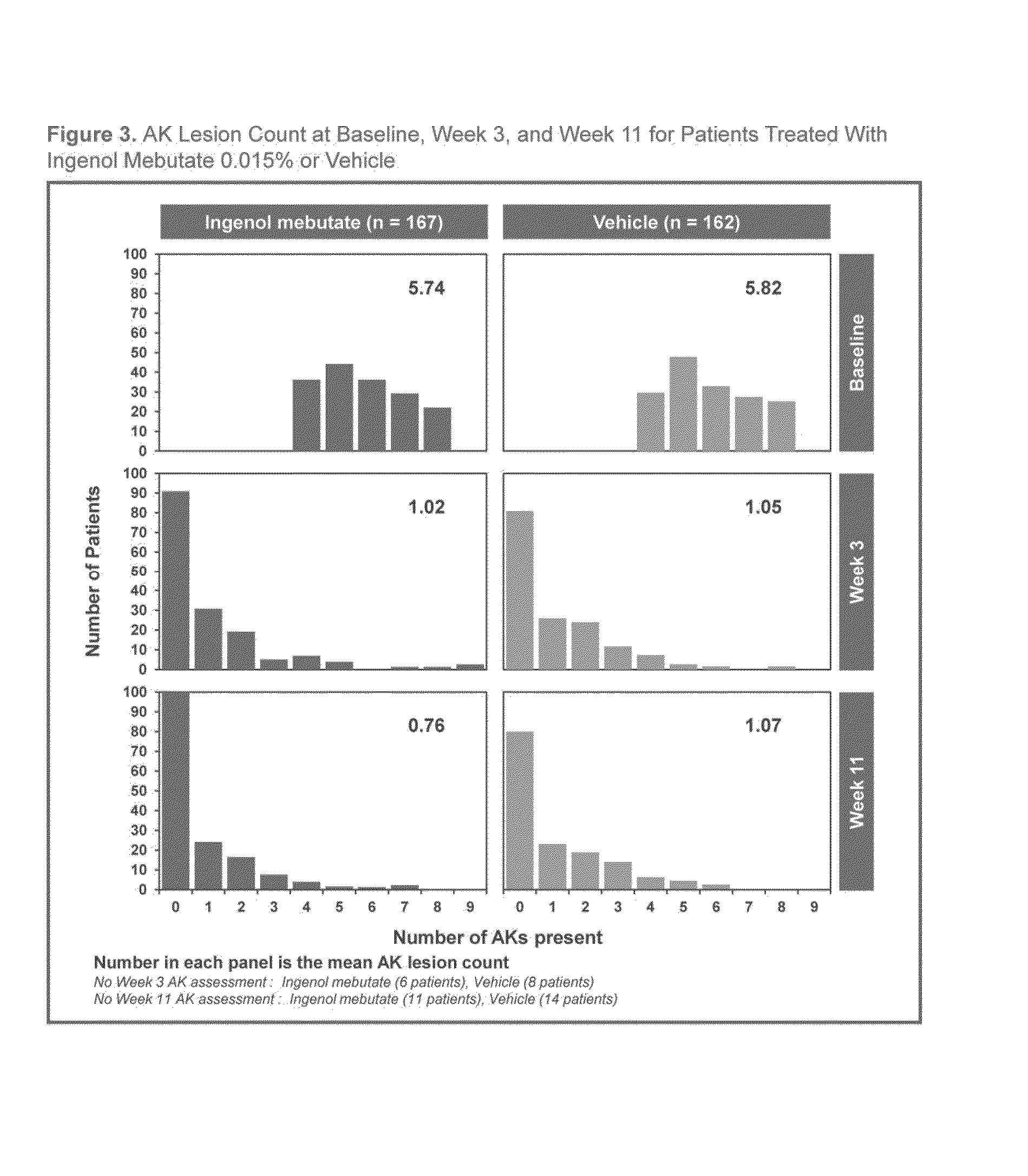Ingenol mebutate in combination with cryotherapy for the treatment of actinic keratosis
- Summary
- Abstract
- Description
- Claims
- Application Information
AI Technical Summary
Benefits of technology
Problems solved by technology
Method used
Image
Examples
example
[0083]A Phase 3, multi-centre, randomised, two-arm, parallel group, double-blinded, vehicle-controlled, 12-month study is being conducted (See FIG. 1). Eligible subjects with 4 to 8 clinically typical, visible and discrete AKs within a contiguous 25 cm2 treatment area on the face and scalp were randomised to one of two arms. Treatment Arm A received cryotherapy to all visible AKs (4-8 lesions, “baseline lesions”) in the selected treatment area then, after 2-4 weeks healing time, they received field treatment with ingenol mebutate (PEP005 Gel) 0.015% once daily for 3 consecutive days. Treatment Arm B received cryotherapy to all visible AKs (4-8 lesions, “baseline lesions”) in the selected treatment area then, after 3 weeks healing time, they received field treatment with vehicle gel once daily for 3 consecutive days.
[0084]Eligible subjects included male or female, at least 18 years of age, with 4 to 8 clinically typical, visible, and discrete AK lesions within a 25 cm2 contiguous tre...
PUM
| Property | Measurement | Unit |
|---|---|---|
| Fraction | aaaaa | aaaaa |
| Time | aaaaa | aaaaa |
| Fraction | aaaaa | aaaaa |
Abstract
Description
Claims
Application Information
 Login to view more
Login to view more - R&D Engineer
- R&D Manager
- IP Professional
- Industry Leading Data Capabilities
- Powerful AI technology
- Patent DNA Extraction
Browse by: Latest US Patents, China's latest patents, Technical Efficacy Thesaurus, Application Domain, Technology Topic.
© 2024 PatSnap. All rights reserved.Legal|Privacy policy|Modern Slavery Act Transparency Statement|Sitemap



